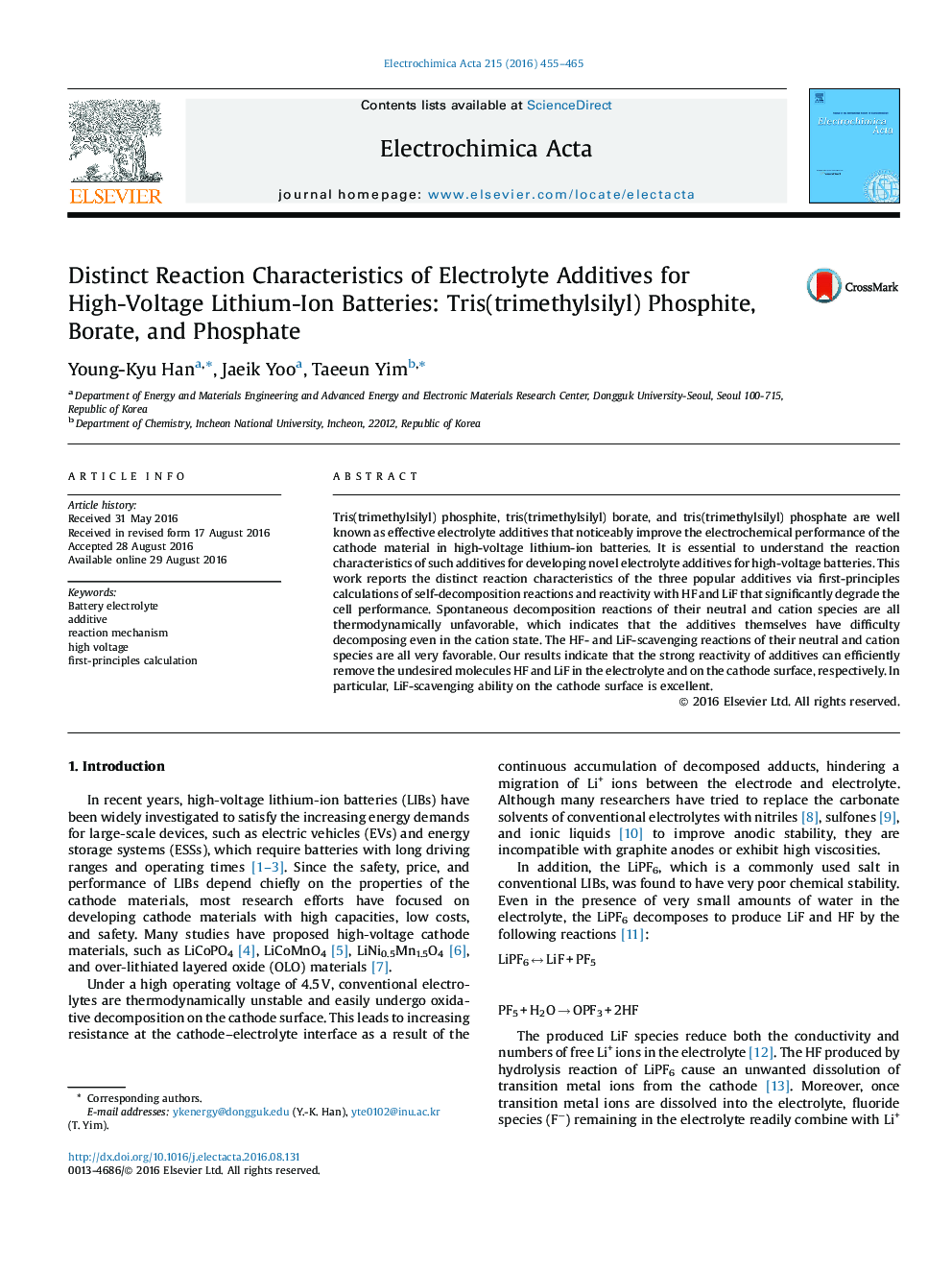| Article ID | Journal | Published Year | Pages | File Type |
|---|---|---|---|---|
| 6473197 | Electrochimica Acta | 2016 | 11 Pages |
Abstract
Tris(trimethylsilyl) phosphite, tris(trimethylsilyl) borate, and tris(trimethylsilyl) phosphate are well known as effective electrolyte additives that noticeably improve the electrochemical performance of the cathode material in high-voltage lithium-ion batteries. It is essential to understand the reaction characteristics of such additives for developing novel electrolyte additives for high-voltage batteries. This work reports the distinct reaction characteristics of the three popular additives via first-principles calculations of self-decomposition reactions and reactivity with HF and LiF that significantly degrade the cell performance. Spontaneous decomposition reactions of their neutral and cation species are all thermodynamically unfavorable, which indicates that the additives themselves have difficulty decomposing even in the cation state. The HF- and LiF-scavenging reactions of their neutral and cation species are all very favorable. Our results indicate that the strong reactivity of additives can efficiently remove the undesired molecules HF and LiF in the electrolyte and on the cathode surface, respectively. In particular, LiF-scavenging ability on the cathode surface is excellent.
Related Topics
Physical Sciences and Engineering
Chemical Engineering
Chemical Engineering (General)
Authors
Young-Kyu Han, Jaeik Yoo, Taeeun Yim,
